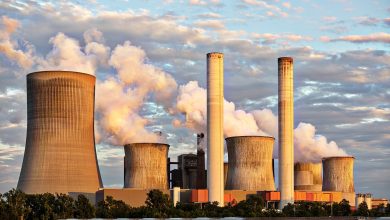Fossil Fuels and Acid Rain: Is there a Connection?

Skyrocketing Demand for Energy
The global energy requirement has skyrocketed at a phenomenal rate within the past few decades. Developing countries like China, India, and Brazil have experienced rapid economic growth that has fueled the demand for cheap and reliable sources of energy. Fast-growing economies, coupled with the desire to raise the overall standard of living in less developed nations, have contributed to an increasing demand for fossil fuels. Moreover, developed countries are also still increasing their production of non-renewable sources of energy. According to publicly available government documents, by 2030, the United States, Saudi Arabia, China, Russia, India, Canada, and Australia plan to produce 120 percent more fossil fuels than are currently produced today (Leahy, 2019). In addition to concerns about not meeting the climate change goals that are outlined within the 2015 Paris Climate Agreement, scientists and researchers continue to warn the world’s political leaders about the increasing incidents of potentially dangerous acid rain.

Acid Rain and the Environment
The impacts of fossil fuel consumption continue to have a detrimental effect on many aspects of the environment. Environmentalists and natural resource specialists often point to acid rain as one of the most visibly harmful impacts of fossil fuel consumption. Acid rain is known as any form of atmospheric precipitation that is comprised of high levels of sulfuric and nitric acids. In addition to precipitation, these toxic elements can form into acid snow, hail, fog, and other minuscule particulate matter that falls from the upper atmosphere down to the Earth’s surface.
Common rainfall events have a pH (scale used to specify how acidic or basic a water-based solution is) of 5.6, while acid rain typically has a pH of between 4.2 and 4.4. The lower the pH of a substance (less than 7), the more acidic it is; the higher the pH of a substance (greater than 7), the more alkaline it is. Research scientists, policymakers, modelers, and ecologists depend on the National Atmospheric Deposition Program’s (NADP) National Trends Network (NTN) to develop acidity measurements of precipitation events. This network has over 250 acidity monitoring sites throughout the continental U.S., Alaska, Hawaii, Canada, and the US Virgin Islands.
While nitrogen oxides and sulfur dioxides are not known as greenhouse gases that contribute to global warming, both gases cause numerous environmental and health concerns because they can circulate easily through air pollution and acid rain (Nunez, 2019). Acid rain is particularly detrimental for trees and even entire forests because it removes essential nutrients like magnesium and calcium from the soil, which are critical for trees to survive. When soil lacks magnesium and calcium, forests can become susceptible to damage from fungal infections, insects, and cold weather. Furthermore, acid rain adds aluminum to the soil. When aluminum soaks deep into the ground near a tree’s roots, it ultimately prevents the roots from being able to collect enough water for the tree to survive. In addition to attacking the tree below ground, acid rain is also able to destroy a leaf’s protective outer coating and prevents photosynthesis from happening. Without the process of photosynthesis, trees are unable to produce food, energy, or oxygen.

Human Health
Humans are also adversely impacted by acid rain. Breathing in acid particles in the form of fog or other fine particulate matter can make people prone to lung infections, respiratory problems, and even serious diseases such as asthma, long-term chronic bronchitis, emphysema, and pneumonia (Jakuboski, 2011). While acid rain would look, feel, and taste like normal rain, the small difference in acidity and its ability to collect other fine particulate matter can exacerbate a variety of human health conditions. According to the U.S. Environmental Protection Agency (EPA), coming in contact with acidic water, whether swimming in a lake or walking through a puddle, causes no more harm than coming in contact with clean water. The indirect effects that come as a result of breathing in the potentially dangerous particulate matter are what humans should avoid. In addition to impacting human health and the environment, acid rain can also take a toll on physical infrastructure by corroding buildings, bridges, and other man-made elements of the built environment (Ghose, 2015).

The Fossil Fuel Link
Scientists say that the primary source of acid rain and precipitation events can be linked to human activities that involve burning fossil fuels. When fossil fuels are burned in power plants or through vehicle tailpipe emissions, sulfur dioxide and nitrogen oxides are released into the atmosphere. When these gases react with oxygen, water, and other substances, they form airborne sulfuric and nitric acid. Both sulfuric and nitric acid are highly soluble in water. After winds blow these chemicals into the upper atmosphere, they often fall back down to Earth in the form of acidic precipitation. The first cases of acid rain were reported in heavy manufacturing areas of Europe during the late 1950s and 1960s (Ghose, 2015). Beginning in the 1970s and throughout the 1980s, the media focused heavily on this newly discovered phenomenon. Today, renewable energy advocates point to acid rain as another reason that humans should seek to abandon the use of fossil fuels.
Fossil fuel industry executives often point to the fact that acid rain can also be caused by natural processes like rotting vegetation and erupting volcanoes. Although, scientists put much of the blame on using coal as a source of energy. While coal is a fossil fuel that plays a crucial role in meeting global energy and development needs, it is often labeled as one of the dirtiest fossil fuels. When coal is burned, it emits sulfur, nitrogen, and numerous other gases and harmful pollutants. The more coal that is burned, the more acid rain that a region can expect to experience. However, according to the World Coal Association, coal industry leaders are implementing clean coal technology, pre-planning projects, applying pollution control measures, evaluating the impacts of mining, and conducting numerous other initiatives to ensure that the coal industry minimizes the effects of its operations on local communities, air quality, and the environment in general.

Water Quality Impacts
While the fossil fuel industry has stated that it has been implementing pollution control measures on power plants to reduce the incidents of acid rain, the prevalence of acid rain continues to have widespread impacts on the environment. Important insights into the frequency of acid rain events can be monitored by evaluating water quality. Even though physical contact with acid rain has not been shown to have an adverse impact on humans (other than when breathed into the lungs), acid rain can have an adverse impact on marine life. When acid rain flows into bodies of water like rivers and lakes, the acidity can cause fish and sea life to die, which in turn can impact an entire ecosystem. In 1990, a team of researchers from the Adirondack Lakes Survey Corporation (ALSC) conducted a series of tests on lakes in upstate New York to evaluate how acid rain may impact certain species of fish. The ALSC study findings showed that lakes even with slightly below average pH levels (caused by acid rain) had almost no fish (Jakuboski, 2011). Additional studies have shown that acid rain has killed entire fish populations in hundreds of thousands of lakes in the U.S., Canada, and some Scandinavian countries (Ghose, 2015).
In addition to acid rain having an impact on lakes and rivers, research has shown that it can also have an adverse effect on the ocean. A 2007 study published by the Proceedings of the National Academy of Sciences revealed how acid rain can lower the ocean’s pH and deprive it of carbonate ions, which hinders the ability of marine organisms—like shellfish, sea urchins, corals, and some types of plankton—to soak up calcium carbonate to form their hard exterior shells or “exoskeletons” (Carlowicz, 2008). Since these organisms provide food and critical habit for other marine species, impacts to them have been shown to have wide-ranging impacts to all marine life. One of the main effects of ocean acidification that has been at the forefront of media headlines in recent years has been the bleaching of the ocean’s coral reefs. In addition to ocean acidification caused by acid rain, the National Oceanic and Atmospheric Administration (NOAA) has been monitoring how excess carbon dioxide already in the atmosphere from fossil fuel emissions has also contributed to decreasing pH levels in the world’s oceans.

Government Regulations
Since the phenomenon of acid rain was first recognized in the late 1950s and 1960s, there have been a number of attempts to identify opportunities to reduce its occurrence and associated impacts. Because the coal industry has been found to be a major contributor to acid rain, the Clean Coal Technology Program was established in 1985 to help reduce pollution from coal-fired power plants. Since the program’s founding, four billion dollars has been donated by the coal industry, and two billion dollars has been allocated by the federal government to help achieve cleaner-burning power plants (Jakuboski, 2011). These funds have been used to remove sulfur from coal, install flue gas desulfurization systems (also known as scrubbers), and identify new opportunities to clean up the coal industry. Studies have shown that, when modern flue gas desulfurization systems are in place, coal-fired power plants have the ability to reduce sulfur dioxide emissions by as much as 90 percent (Jakuboski, 2011).
The U.S. has also taken action against acid rain with the passing of the Clean Air Act of 1990. This monumental law established pollution control limits that have helped to cut sulfur dioxide emissions by 88 percent between 1990 and 2017 (Nunez, 2019). Moreover, the Clean Air Act also established the Acid Rain Program, which required major emission reductions of sulfur dioxide and nitrogen oxides from power plants and industrial regions. The Acid Rain Program also became the first program in the U.S. to function as a national cap and trade program that created a system of allowance trading to use market-based incentives to reduce air pollution.
Cap and trade programs are effective at reducing emissions because they provide companies and power plants with flexibility and a variety of options in terms of how emissions could be reduced. Since the establishment of the Clean Air Act and the Acid Rain Program, evidence has shown that numerous red spruce forests in New England and some river and lake fish populations have made a significant comeback. Researchers from the University of Vermont’s Forest Ecosystem Monitoring Cooperative found that the amendments brought forward by the Clean Air Act have helped to restore entire natural ecosystems.

International Efforts
As developing nations like India and China have continued to rely on coal for power generation, they have also started to move forward with regulations to limit coal pollution. After Beijing introduced a national target for reducing sulfur dioxide emissions, China’s sulfur dioxide emissions decreased by more than 13 percent between 2006 and 2010 (Larson, 2010). Similarly, India’s Ministry of Environment and Forests has also revealed targets to lower sulfur dioxide emissions after the country’s leaders revealed plans to rapidly expand coal-fired power plants. Since the consequences associated with acid rain are now widely known, it will be imperative to reduce the impact of energy generation on air quality. While the demand for coal and fossil fuels as a whole continues to increase, world leaders are continuing to take action to implement more stringent pollution control measures to prevent acid rain from adversely impacting human health and the environment.
Sources
Carlowicz, M. (2008). “The Oceans Feel Impacts from Acid Rain.” Woods Hole Oceanographic Institute.
Ghose, M. (2015). “From India: Commentary and a Perspective of Coal as a Primary Energy Source and Atmospheric Interactions of Pollutants Causing Acid Rain.” Environmental Quality Management.
Jakuboski, S. (2011). “Toxic Rain: The Effect of Acid Rain on the Environment.” Nature.
Larson, C. (2010). “China Takes First Steps In the Fight Against Acid Rain.” Yale University.
Leahy, S. (2019). “Dangerous levels of warming locked in by planned jump in fossil fuels output.” National Geographic.
Malbeuf, J. (2019). “Acid rain from oilsands having less impact than expected on boreal forest, studies find.” CBC.
Nunez, C. (2019). “Acid rain, explained.” National Geographic.



